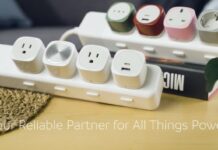Smart devices have a role to play in the move from dirty to clean energy. People need tools that help them better understand where their energy comes from, see how much they’re using, and pitch in to make a more resilient power grid.
Conventional electrical systems and devices are not very eco-friendly. This creates the need for devices with better design, built by developers with an understanding of the need to limit carbon emissions. This is where smart devices prove their worth.
The advent of smart technology and smart systems has led to the development of several innovative devices that can cut down on the energy consumption of our homes, making them greener and more sustainable than ever before.
In this article, we are going to discuss some of the devices that help you to fight climate change.
Also Read: Smart Ring: Google’s Patent To Control Devices Using Hand Gestures In 2021
Contents
- Smart Thermostats
- Power Strips
- Sprinkler Systems
- Smart Bulbs
- New Smart Meters
1. Smart Thermostats
Smart thermostats are a practical innovation that makes our homes smarter and more energy-efficient. A smart thermostat memorizes the user’s schedule and energy consumption patterns. and integrates them with the heating and cooling systems of the house.
It has motion sensors that detect movement within a room. And can shut off the heater automatically when the room is unoccupied. A smart thermostat also optimizes the heating and cooling of a room depending on the number of people present.
A smart thermostat can run programs to create the best ambient atmosphere for users, ensuring maximum comfort.
Smart thermostats also integrate the data with the outside weather conditions. Thus controlling the house’s humidity and other temperature requirements.
Smart thermostats also share monthly notifications about the household’s energy consumption patterns. And present tips on saving energy and reducing electricity bills.
Also Read: Telegram Introduces Energy-Efficient Animations And Much More In 2021
2. Power Strips
Some smart power strips have circuits that optimize and conserve power when there is a power cut in the house. They distribute the charge amongst circuits where devices can be charged and act like a multiple-circuit power bank for electronic devices such as laptops, PCs, and phones.
Having said that, smart power strips do more than just charge electronic devices. Unlike conventional power strips that keep consuming energy even after the device has been charged, smart power strips stop charging automatically, even if the device is plugged in. When not in use, the power strip can even shut itself down.
In addition, it also sends charging status notifications to the connected mobile app if any high voltage devices are plugged in, to prevent short circuits.
Also Read: What Devices Will You Find In The Smart Kitchen?
3. Sprinkler Systems
With climate change and global warming, water resources are becoming scanty. Watering the lawns, especially, wastes a lot of water, which results in overall energy wastage in the home. Smart home irrigation systems optimize water usage and reduce its wastage. Installation of smart sprinklers in the house can reduce wastage of water to a great extent. With this, the household will not be just conserving water but also saving on their annual water bills.
The best part about smart sprinklers is that they are easy to install. You can connect it with the hose pipe or the in-ground irrigation system and control it from your smartphone. Smart sprinklers have sensors that analyze the weather and the soil condition of the area to optimize water usage. If your lawn has moist soil, the sprinkler will release less water. They also come with smart scheduling to set the timer and the duration for watering the lawns. Advanced sprinkler systems also integrate with voice-controlled devices and let the user control the direction of water sprays, so that certain parts of the lawn do not get underwatered or be spoiled with over-watering.
An added advantage of smart sprinklers is the availability of different sprinkler heads to ensure efficient usage of water, as per the size of the lawn and other horticultural requirements. Homeowners can also conserve water by getting notifications about water shortages in the neighborhood or during a drought and accordingly changing the sprinkler settings for reduced water usage.
Also Read: Huawei Engineer Creates The Smallest Holocube Projector Ever!
4. Smart Bulbs
Indoor lighting is one of the biggest contributors to energy consumption in the average American household. This can be effectively reduced with the help of smart bulbs, which are internet-enabled LED bulbs that can be configured and controlled remotely. Smart bulbs have motion sensors that automatically shut down when the room is unoccupied. You can also customize its brightness or dimness by integrating it with voice-controlled technology.
In addition, smart bulbs have in-built features that make them more durable than incandescent or fluorescent bulbs. They can also be charged, lasting for five to six hours during a power cut. Statistics show that switching to energy-efficient light bulbs can make the home smarter and more eco-friendly. And switching to smart bulbs can help a household save thousands of dollars on their annual electricity bills.
5. Smart Meters
Often, we feel that we are conserving energy, but unless there is are measurable ways to know our energy consumption, we cannot be sure. That is what an energy meter does and, by extension, a smart meter.
However, unlike generic electric meters that simply record energy consumption on utility devices, smart meters give data on real-time electricity consumption at short intervals. Smart meters have a two-way connection between the meter and the central electronic system of your home.
The readings from smart meters are more accurate than conventional meters as the entire process is automated and requires minimal human interference. It also helps optimize the electricity demand and sends homeowners notifications about their consumption patterns and tips to cut down electricity wastage. This helps to reduce the carbon footprint of individual households.
Also Read: Unable to Logon to Windows as it asks for a Smart Card that I have never Used
Conclusion
With these devices, smart home automation can alter not only your lifestyle but also lower energy wastage. With smart monitoring systems and regular notifications, smart devices can study to minimize the energy wasted every day.
Studies estimate that households in the United States install smart devices in their homes, we can reduce electricity bills significantly in the near future. This would be a huge step towards achieving our sustainability goals and creating an eco-friendly future.


























![The Apex Legends Digital Issue Is Now Live! Apex Legends - Change Audio Language Without Changing Text [Guide]](https://www.hawkdive.com/media/5-Basic-Tips-To-Get-Better-On-Apex-Legends-1-218x150.jpg)












